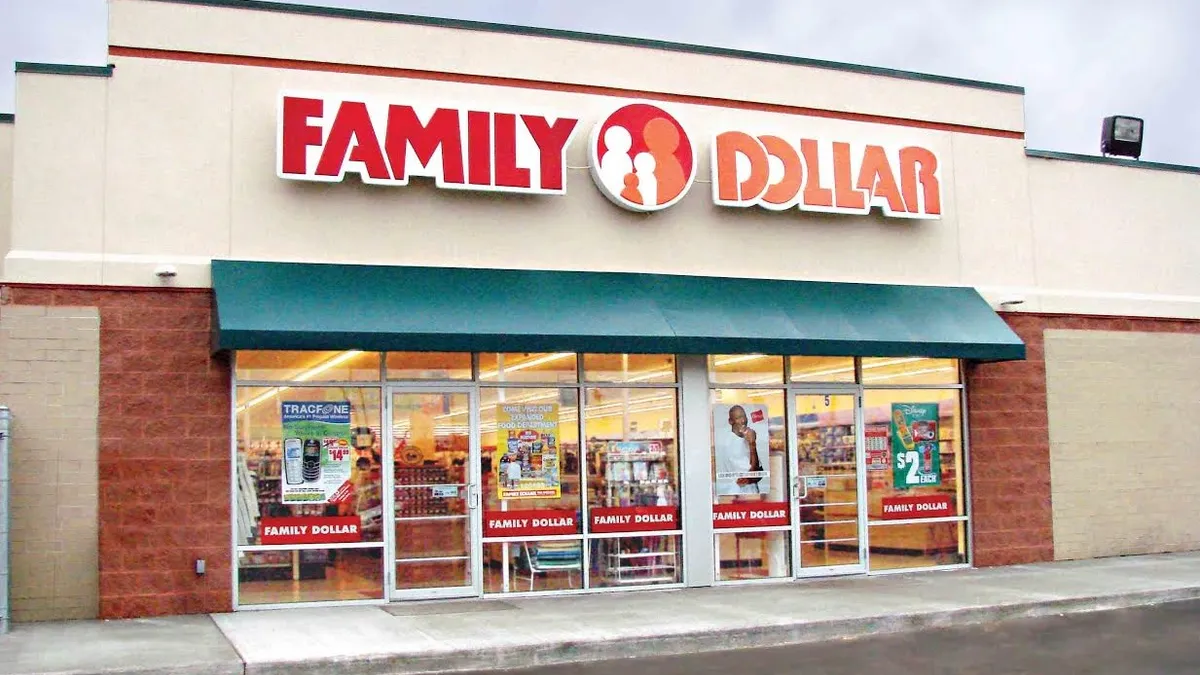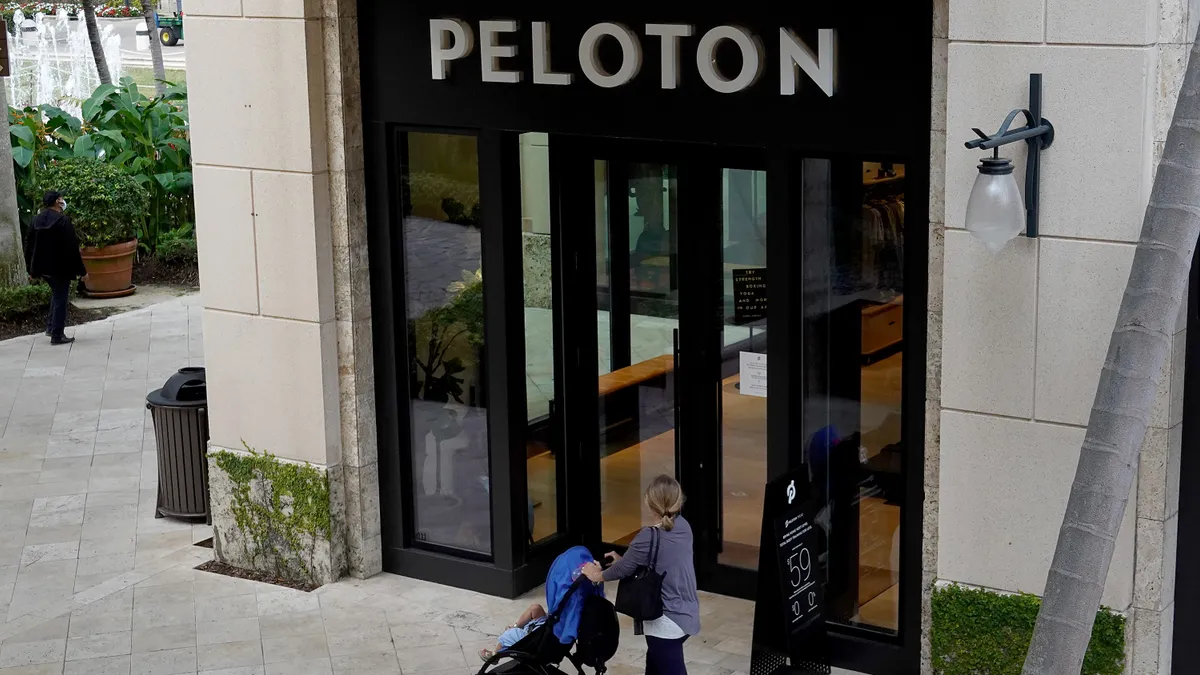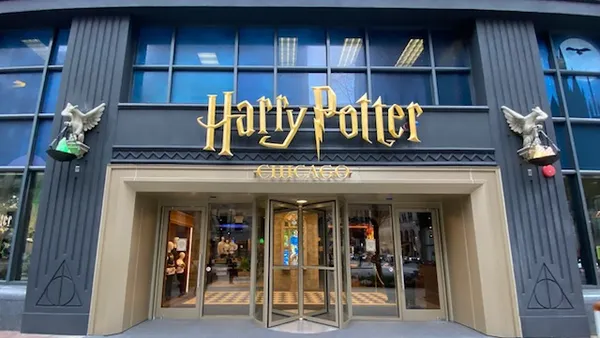Last fall, Dollar Tree broke from decades of tradition with a new price point, the $1.25 tag, after a generation as a true dollar store.
This year — after an executive and board shakeup — the parent company is going the opposite direction with its Family Dollar banner. Dollar Tree Inc. executives have said that in July they began making “price investments” at Family Dollar, which is retailspeak for slashing or holding down prices.
The pricing moves at Family Dollar are significant enough that Dollar Tree Inc. lowered its profit forecasts for the year, with 60% of the guidance cut coming from the price investments. J.P. Morgan analysts led by Matthew Boss estimated that the price investments amount to $130 million to $135 million for the second half of the fiscal year.
Executive Chairman Richard Dreiling — a former chief executive of rival Dollar General who started earlier this year as the handpicked board leader by activist investment firm Mantle Ridge — said the pricing changes were “the most notable action” so far since the new leadership team has taken over.
The cuts, Dreiling noted, were intended to “close our historical gap in pricing” with “key competitors,” whom Dreiling left unnamed. “We believe this is a necessary action to provide the right value proposition and a foundational step to improve Family Dollar long term and that it will pay off handsomely,” he added.
Perhaps more tellingly, when asked by an analyst about the most positive and negative surprises for him since joining the company, Dreiling pointed to the size of the pricing gap at Family Dollar as the biggest bad surprise.
CEO Mike Witynski, who survived the leadership shuffling and activist campaign this year, said on the same call, “with the recent price investments, we believe Family Dollar is now in a better competitive position on price than it has been for over a decade.”
Time will tell if the dollar store chief is right. The price changes are likely aimed at Dreiling’s former employer, which happens to be the company’s chief competitor and one of the largest forces in retail today, making the turnaround of Family Dollar a huge undertaking.
‘A tale of two companies’
Leon Levine opened the first Family Dollar in 1959 in North Carolina with the aim of providing merchandise of decent value for under $2 with a low-cost operating model. Levine was in his early 20s at the time and went on to open 27 stores by the end of the 1960s.
By the time Dollar Tree struck a deal to acquire the chain in 2014, Family Dollar had more than 8,000 stores. The combined companies created a 13,600-store behemoth in the discount sector, which has expanded its total footprint by more than 2,500 since then.
In the years after the merger, Family Dollar has mostly underperformed its sister banner Dollar Tree. In August, Neil Saunders, managing director with GlobalData, called Dollar Tree Inc. “a tale of two companies.”
“The bad company is Family Dollar which continues its long run of underperformance,” Saunders said following the retailer’s Q2 earnings report.
Chief among the banner’s problems is “a relatively weak proposition with a somewhat jumbled selection of products that, despite the dollar store environment, are not always sold at the most competitive prices,” Saunders added. “On top of this, the dingy and depressing environment in many stores is not conducive to attracting or retaining customers, nor is it helpful for increasing average basket size.”
The notable exception to the performance trend was the pandemic era, when Family Dollar’s assortment of consumables helped boost sales at a time when consumers were avoiding in-person shopping, seeking out nearby stores and consolidating shopping trips at general merchants.
But a reshuffling of consumer habits as the pandemic wears on has reexposed Family Dollar’s weaknesses. While the banner has underperformed next to Dollar Tree, both banners together have underperformed against Dollar General, an ever-expanding juggernaut in the deep discount sector.
Q2 data from Bloomberg Second Measure shows that Dollar General’s average transaction value, at $24, is $5 higher than Dollar Tree Inc.’s. At the same time, Dollar General had 5.4 transactions per customer to Dollar Tree Inc.’s 3.1 per customer. (The data combines the Dollar Tree and Family Dollar banners.)
However, also during Q2, Family Dollar saw double-digit annual growth in customer visits, particularly high along with Five Below’s traffic in the sector, according to foot traffic analytics firm Placer.ai. That could be thanks in part to lower prices at Family Dollar.
Left in the dust?
That Dollar General is the target of Family Dollar’s price investments is no secret to the market.
Looking at a select basket of SKUs, Boss and the J.P. Morgan team found that Family Dollar was priced 2% to 3% higher on average than Dollar General at the end of June.
But by the end of August, Family Dollar’s prices for the basket were 0.3% lower than Dollar General. Notably, both trailed the pace of food price inflation, which “support[s] the dollar store sector’s value proposition,” the J.P. Morgan analysts said.
The current economic moment is a big deal for both discount players. With consumers seeking relief from rising prices on food, gasoline, rent and other areas both essential and discretionary, the dollar stores see an opportunity to capture market share.
In a separate note following a conversation they had with Dreiling, Boss and the J.P. Morgan analysts said that the Dollar Tree Inc. chairman sees Family Dollar as in a similar position as Dollar General was when he headed it during the 2008 to 2009 recession.
New “trial” customers during the recession helped expand the sector’s share of wallets. The same could happen today, which helps explain why Family Dollar is accelerating its price investments.
“Dreiling sees timing today as most opportune to accelerate investments on price and store standards at [Family Dollar] to acquire and retain new customers who pivot into the dollar store channel (similar to 2008/09) as a result of the current economic backdrop,” the J.P. Morgan analysts said.
As for Dollar General, UBS’ Michael Lasser questioned the company’s executives directly in August about Family Dollar’s price investments as well as Dollar General’s store investments.
On a conference call the same morning as Dollar Tree Inc. held its earnings call, Lasser said that “the net result of all this could mean that the profit rate … in small box retail has peaked as now two competitors that are going to be stronger and well positioned, are fighting a little bit harder against each other.”
In responding, Dollar General CEO Todd Vasos pointed to the company’s initiatives, including those which the company has not yet announced, as giving it plenty of fuel to continue its growth streak.
When it came to addressing Family Dollar’s competitive salvo, the Dollar General chief did not mince words.
“What we are here to do, as you know us pretty well, Michael, is controlling what we can control and forging ahead on our initiatives,” Vasos said. “We have left our chief competitor completely in the dust. That will take years — years — to catch up.”























